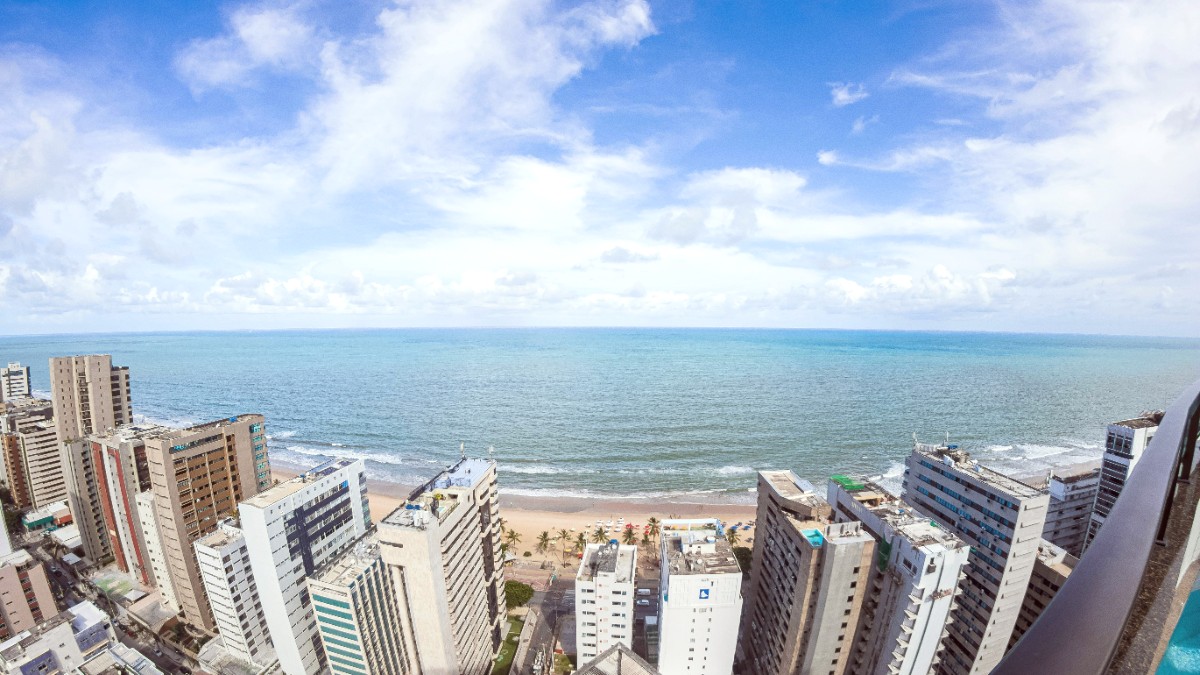
The Northeast, Brazil
The city's spirit appears immediately. Look for the brightly painted colonial buildings, the intricate bridges spanning waterways, and the constant movement of people. Recife is not just a destination; it is an experience for your senses. The scent of tropical fruits, the sound of the ocean, and the warmth of the sun create an inviting atmosphere. This guide gives you the tools you need to discover the city's many layers.
Recife maintains a welcoming atmosphere, combining the relaxed pace of coastal life with the dynamism of a major urban center. You find opportunities to connect with local traditions, taste distinct flavors, and witness the city's ongoing story.
Every street corner has a narrative, and every landmark is a piece of its past.
Recife's geography sets it apart. The city lies on the Atlantic coast of Brazil, within the state of Pernambuco. Two main rivers, the Beberibe and the Capibaribe, converge here, flowing into the vast Atlantic Ocean. This confluence creates an unique landscape of islands and peninsulas, interconnected by numerous bridges. This natural design earned Recife its nickname, "Brazilian Venice." Water defines much of the urban experience.
The metropolitan area extends across a relatively flat coastal plain. This low-lying terrain makes the city susceptible to the movements of its rivers and the ocean tides. Beyond this plain, a gentle rise of hills marks a subtle transition from the coastal environment to Pernambuco's more undulating interior. This geographical layout directly shapes the city's development and its scenic appeal. The natural reef system along its coast creates natural pools near the shore at low tide, calm areas for swimming, especially along Boa Viagem Beach. These reefs also act as a natural barrier, shaping the interaction between the ocean and the city. The interplay of rivers, islands, bridges, and the ocean creates a distinctive urban environment. The city's coastal location also benefits from ocean breezes, relief from the tropical heat. This blend of water features and coastal proximity gives Recife its signature landscape.
Atlantic coast, Pernambuco state.
Beberibe and Capibaribe rivers meet, flowing into the ocean.
Many islands and peninsulas, interconnected by bridges.
Forms natural pools, especially at Boa Viagem Beach.
Low-lying terrain, gentle hills inland.
The rivers are more than just geographical markers; they are historical and cultural arteries. They facilitated trade, transportation, and settlement from the city's earliest days. Even today, boat tours on the Capibaribe River offer an unique way to see the city's landmarks and appreciate its watery character.
Rivers drove the city's early development, facilitating commerce and movement. This deep connection to water is a constant theme in Recife's identity.
Boat tours offer distinct views of bridges and waterfront architecture, demonstrating Recife's unique urban fabric from the water.
Plan your movement around Recife by understanding its bridges and waterways. Many routes traverse bridges, offering scenic views.
Portuguese settlers founded the city in 1537, recognizing its strategic location as a natural harbor. This port quickly grew into a main gateway for Brazil's booming sugar cane industry. Sugar, a highly valuable commodity in Europe, flowed out of Recife's docks, making the city an economic power. This early prosperity laid the groundwork for its future growth and prominence in the region.
A significant chapter in Recife's history involves the Dutch. From 1630 to 1654, the city was under Dutch rule, the capital of New Holland. Governor Johan Maurits van Nassau-Siegen led this period. His leadership brought considerable urban and architectural development. He introduced European-style planning, built new infrastructure, and fostered a period of cultural and scientific exchange. The Dutch left a lasting legacy visible in some architectural styles and the city's layout. This era also saw the Kahal Zur Israel Synagogue, the first synagogue in the Americas, established in 1642, highlighting a diverse community during this time.
Strategic harbor, sugar cane industry hub, early economic power.
Capital of New Holland, urban development by Johan Maurits, first synagogue in Americas (Kahal Zur Israel, 1642).
Continued growth as trade center, grand churches, public buildings.
The city also is a rich history of cultural resistance and popular movements. Pernambuco, and Recife as its capital, saw various revolts and expressions of autonomy throughout its history.
Approximately 1.66 million residents within city limits, 4.1 million in broader Metropolitan Region.
Commerce, services, tourism, and healthcare pillars.
Porto Digital fosters tech and software development, transforming Recife Antigo.
Porto Digital transformed a formerly dilapidated area into a dynamic hub for tech companies, startups, and creative industries. It brought new energy and job opportunities to the city, positioning Recife as a leader in the Brazilian technology sector. This development illustrates the city's capacity for reinvention.
Healthcare forms a significant sector, with Recife recognized as a medical hub. It draws patients and professionals from across the region, adding to the city's overall economic strength.
Shipbuilding and logistics benefit from Recife's historically strong port infrastructure. The port remains a connection point for goods moving in and out of the region, sustaining its role in trade.